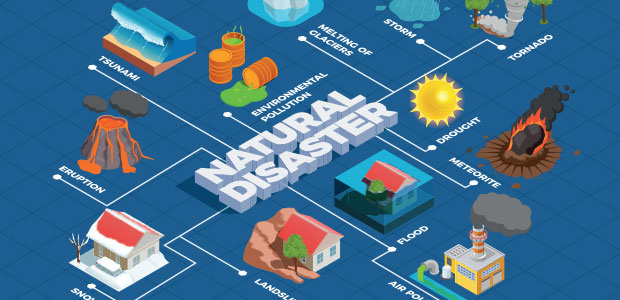
5 Considerations for Disaster-Resilient Buildings
- By Jane Marsh
- Nov 29, 2021
Both natural and manmade disasters can wreak havoc on a society's infrastructure and economic state. As a direct result of climate change, more natural disasters such as wildfires, widespread flooding, hurricanes, and tropical storms, occur more frequently. Managing these disasters costs billions of dollars annually.
Additionally, poor populations are disproportionately affected by natural disasters. If a given region has informal housing and is prone to hazards induced by climate change, it can lead to a disastrous situation for the people dwelling in that region.
Governments need to intervene to heighten regulations and policies surrounding the impact of climate change. Whether it’s working with national organizations or producing clean energy initiatives, the leaders of countries worldwide need to do more to combat these issues that affect our health and well-being.
This is one of many reasons why building resilient cities and structures that can withstand even the most severe natural disasters is crucial. Aside from achieving economic stability, resilient cities can prevent loss of life — something that everyone can get behind.
What to Consider When Building Disaster-Resilient Structures
All of these factors listed below can come from a natural disaster, and often, collapsed buildings are the main contributor to the loss of life they cause, not the natural disaster itself.
Below are some of the considerations that have to be made when retrofitting buildings to be disaster resilient.
- Strong Winds. Severe winds can occur at any time, but especially during tornadoes, hurricanes, and thunderstorms. Some of the key components of wind-resistant buildings are steel and block framing, hurricane clips, impact-resistant glass windows, and durable siding and roofing. Pressure from high winds can rip off roofing and siding and collapse doors and windows. Installing aerodynamic exteriors, which are becoming increasingly popular, is one way to make buildings more wind resistant. For example, octagonal and hexagonal-shaped buildings and roofs are more wind resistant than other, more regularly shaped structures.
- Earthquakes. Earthquakes are known to cause buildings to collapse. Creating buildings that can withstand seismic activity is challenging, considering that anticipating an earthquake is nearly impossible. However, two components can make buildings more resilient in these cases.
Base isolation and distributed viscous dampers are both meant to soften the impact of earthquakes or other seismic activity, making the buildings safer overall. Dampers and base isolation act as shock absorbers, and more facilities will likely incorporate these elements, especially in areas with higher risks of experiencing earthquakes.
- Snow. Roof construction plays a significant role in handling large amounts of snow during the winter months. In 2021, four buildings collapsed in Chicago due to back-to-back snowstorms, which highlighted how old roofs are not suited to handle these snow loads.
Snow that builds up on roofs can cause potential water damage and leaks and cause a building to have heat loss, resulting in freezing indoor temperatures. For example, a flat roof would not work well in snowy climates — as snow melts, there’s nowhere for the excess water to drain sufficiently. Therefore, snow-resistant buildings need to have sloped roofs, clear gutters for drainage, and strengthening supports to handle snow loads.
- Fires.
Fire-resistant buildings are crucial in areas where wildfires tend to run rampant — notably areas in the country's western region. Some of the building components used to fortify structures in these areas, or any area experiencing droughts and are more susceptible to wildfires, are non-combustible roofs and siding, as well as fire breaks and barriers.
Many building codes require some fireproofing, whether it's using structural steel or applying low-density fiber or cementitious compounds. While wildfires are known natural disasters, fires can spark anywhere for various reasons. It's always suggested that builders fireproof buildings to be on the safe side.
- Floods. For properties in flood hazard areas, it's essential to consider reducing damage and making cleanup easier during natural disasters such as tsunamis, tropical storms, or hurricanes. Losses from flooding amounted to $17 billion back in 2020. Foundations in buildings near flood zones need to be secured against water, and any building materials must be water resistant.
In many areas with a high risk of flooding, both FEMA and the National Flood Insurance Program (NFIP) have building code requirements to protect people living there. Even areas that experience heavy downpours need to take flooding into serious consideration when building basements.
It's also worth mentioning that construction projects need to shift towards more sustainable practices to reduce the amount of waste they generate and curb carbon emissions. Combining sustainability with disaster resiliency is crucial to benefit our environment and keep people safe during weather events.
It's clear that climate change is causing more frequent natural disasters, and the ultimate goal is to create structures capable of withstanding extreme weather conditions.
Creating and Maintaining Buildings to Withstand Natural Disasters
Both architects and engineers of residential and commercial buildings need to consider weather events and work to build disaster-resilient structures. With more natural disasters occurring annually due to climate change, it's now a top priority to equip buildings with weather-resistant materials to ensure the safety of those residing in these properties.
About the Author
Jane Marsh is an environmental writer. You can keep up with her work on her site Environment.co.